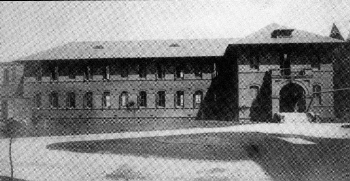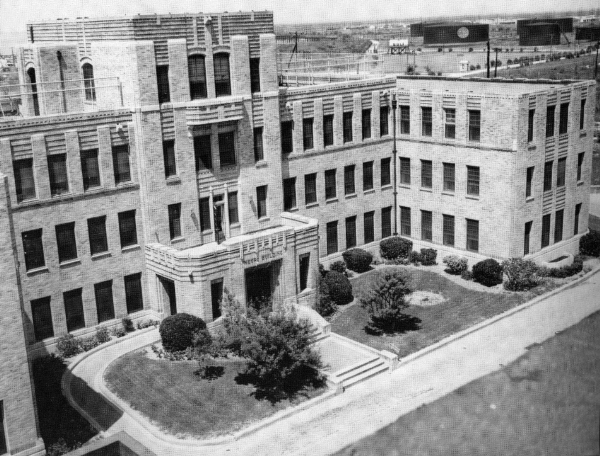By India Ogazi
Mahatma Ghandi once said, “A small body of determined spirits fired by an unquenchable faith in their mission can alter the course of history.” This occurred when a philanthropist, a university and a community came together to open the first state hospital for African-Americans in Texas. In 1902 UTMB opened the state's first state-subsidized “negro” hospital.

Prior to the hospital’s opening, African-American patients were treated in the department for “negro” patients in Galveston’s old City Hospital building, operated by UTMB. In 1900 the old City Hospital was severely damaged in a category 4 hurricane that ravished Galveston – and is still the deadliest storm to date in U.S. history. In 1901 an anonymous New York philanthropist donated $15,000 for the construction of a negro hospital, stipulating that the money was to be used only for the building of a new hospital and not for the repairs of the old City Hospital.
UTMB’s hospital board accepted the donation and its terms, and immediately began planning the hospital’s construction. They determined the $15,000 donation was not enough to complete the building, so an additional $3,000 was donated from the Galveston Storm Relief Fund.
Near the completion of the hospital, a Galveston County Daily News article dated April 6, 1902 ran with the headline, “A Negro Hospital – One of the Finest in South.” The article stated the building was well-ventilated and lighted and had a fine system of sanitary plumbing.
“Nowhere in Texas will the sick black man, woman or child be offered such comfort. It will have all the conveniences and advantages of the white department,” said the article.
To furnish the hospital, African-American citizens of Galveston came together and raised $574.85. The newspaper published a letter from J.R. Gibson on April 5, 1902. The letter read, “To the honorable Board of Managers of John Sealy Hospital … agreeable to a request of yours we have solicited donations from the colored people to aid you by furnishing the wards of the new hospital for colored patients. … We asked for $450.00 but are glad to enclose a check to your order for $574.85.”
Donations were made by 19 African-American organizations in Galveston, including St. Monica Society of Holy Rosary Church, Calton Screwmen Longshoremen Association No. 2 and Acme Lodge No. 64.
The hospital was a two-story building made of pressed brick and could accommodate approximately 60 patients. It consisted of an administration building, two large charity wards for male and female patients and private rooms.

After its opening, UTMB’s Negro Hospital served as a refuge for many black Houstonians. Before 1919, Houston hospitals only employed white physicians and many of them refused to treat black patients.
To accommodate Galveston’s growing population, the hospital was demolished in 1937 to make room for a new three-story Negro Hospital to accommodate 92 patients. It was built for $285,000 and included an obstetrics and gynecological ward, a surgical ward and a ward for crippled children.
Daily News articles from 1954 and 1957 show UTMB petitioned the state for funding to expand the Negro Hospital due to overcrowding. A 1957 article stated that funds were left out for the hospital in a House appropriations bill.
By 1958 the Daily News reported the hospital was closed because of its “inadequacy,” and African-American patients were moved to the main hospital.
Integration wasn’t new to the institution. In 1949, UTMB had already desegregated its medical school with the admittance of the first African-American student to a medical school in Texas.
Today UTMB is one of the top five non-traditional schools in the nation for African-American and Latino graduates and a
leading health system for diversity. Without question, UTMB’s strength in diversity is due in part to a small body of determined spirits who came together over 110 years ago to change the course of history. A philanthropist, a university and a community fired by an unquenchable faith.